The Book that Made Me Read online
Page 3
You see, my father was half Jewish, born in Austria before the Second World War. If he and my grandparents had not escaped to New Zealand they would probably have ended up among the millions of people Hitler killed, as many others in my father’s extended family did. My mother came from the other side of the world too. She was born in Zanzibar, a tiny island off the coast of East Africa, which was once an important stopover for the slave trade. She watched missionaries handing out Bibles to African kids who couldn’t speak English and hadn’t been taught to read anyway, and she thought this was ridiculous — especially when there were so many other things that could have improved their lives in much more practical ways, i.e., better healthcare, fresh running water, fair pay, proper housing, food, education … She saw racism and the damage caused by colonisation firsthand and didn’t like it, not one little bit.
From as far back as I can remember, my siblings and I were encouraged to stand up for the underdog and for the values that make up a decent society, such as fairness, equality, respect, generosity, sharing, honesty, integrity, compassion, and active engagement in the democratic process. Not hard to understand why, when my parents had both seen such terrible injustices done in their lifetimes. The first protest I can remember being involved in, I was maybe six or seven. We stood in front of bulldozers to prevent them cutting down a stand of beautiful native trees on the land next door to our house. (Sadly we didn’t win, but that didn’t deter us from trying again, and again, for many other causes through the years.) We were encouraged to speak out, to question, to demand the best possible behaviour and decision-making from those in charge. Politics was often the subject of discussions around our dinner table (yes, we actually sat down and ate dinner together instead of watching TV!) and my parents modelled their beliefs through action. We opened our home to pregnant unmarried mothers whose families had rejected them, to gay people at a time when being gay was still illegal, and hosted kids from children’s homes and borstals on weekend outings so they could feel part of a loving family, if only for a day.
This was back in the 1960s and 1970s (I know, way back before they knew the Earth was round!) and by the time I reached adolescence I was very much aware of what was going on around me. Nuclear proliferation was a terrifying reality. The Vietnam War was spurring violent protests all over the world. Ireland was in the midst of its bloody civil war, as were many other countries around the globe.
It was around this time, perhaps when I was fourteen or fifteen, that I first read George Orwell’s classic novel Nineteen Eighty-Four. Originally published in 1949, Orwell wrote the book after having observed the atrocities of the Spanish Civil War, the ugly build-up to the Second World War, and the unfolding horror of the Holocaust. Events such as these so disturbed and disgusted him, he made a conscious decision to use his writing as a means of revealing injustice and exposing crimes against humanity, with a personal creative goal of making political writing function as art as well.
Of course he wasn’t alone in this. Literary greats like William Shakespeare often focused on the lusts that drove men to do evil (The evil that men do lives after them; the good is oft interred with their bones); poets often slay us with their potent insights, from the war poets like Siegfried Sassoon (in particular his poem “Attack!”) to dreadlocked performance poets like Benjamin Zephaniah (“Save Our Sons (SOS)”). Kurt Vonnegut’s Slaughterhouse-Five brought the fire bombing of Dresden into stark relief, and who could read Suzanne Collins’ The Hunger Games trilogy without reflecting on the brutality of the politics behind it? Visual artists also used their creativity to make a point; from Pablo Picasso’s magnificent painting Guernica as a response to the Spanish Civil War (like Orwell), to British artist Banksy’s graffiti on the dividing wall between Israel and Palestine, these works are hugely affecting and arresting, all with something worthwhile to say.
Even now, more than a decade into the twenty-first century, Nineteen Eighty-Four is terrifying – perhaps more so today than ever before. It’s one of the original dystopian novels, setting out a world in a state of perpetual war, where an all-seeing government uses mass surveillance and the manipulation of language and media to control the masses, in order to keep them in a state of docile ignorance. They also heartlessly destroy anyone who dares to stand out as an individual or speak against those in control. This is the book that coined the phrase Big Brother is Watching You. It is the ultimate reality TV show. A textbook for terrorists of the mind.
What is really so brilliant about this book (and also most terrifying) is that it could just as well have been written last week about what is going on in our world right now, or back in the mid 1970s when I first read it, as easily as when Orwell first wrote it after the end of the Second World War.
I can remember the great sense of unease I felt knowing that the year 1984 was not some vague imagined “future” but was coming up fast, and that what Orwell was describing was already coming true before my eyes. When we reached 1984 (I was twenty-four years old) I also remember thinking we had dodged a bullet, that it wasn’t really that bad … But, now, thinking about this book again, I’m sad to say that we were living then, as we are living now, in its midst.
This is the magic of truly great fiction: it can either provide a mirror in which to reflect what is going on (in ourselves or our world) or it can become a window (to see into a life or a world other than our own). In Nineteen Eighty-Four’s case, it does both.
George Orwell wrote a brilliant essay called Why I Write in which he explained that one of his motivations for writing was “political purpose”, going on to say that this means: “Using the word ‘political’ in the widest possible sense. Desire to push the world in a certain direction, to alter other peoples’ idea of the kind of society that they should strive after. Once again, no book is genuinely free from political bias. The opinion that art should have nothing to do with politics is itself a political attitude.” When I first read this I let out a big “YES!” Orwell had voiced exactly what I felt: that politics is at the centre of our behaviours, either individually or collectively, and this is what I want to write about, this is what I care about, this is what I want to form the basis of everything I’m trying to say!
This doesn’t mean that I want each book to be a lecture or a party political broadcast! But, given that writing a book is such hard work, I figure I may as well spend the time working on something that I really care about and that hopefully has something worthwhile to say. For me, the books (and films and paintings) that I most love are the ones that raise questions inside me and make me think really hard about the issues raised. They might bring to life a person who is struggling with a situation I didn’t know existed, so I can feel how it is for them (the window), or they might pit the character up against some situation that reflects some issue in my own world (the mirror) and, in the process, clarifies how I feel about it.
The other thing a good book has to do, in my opinion, is to move me emotionally. It needs to grab me by the heart and make me ache for the character as if they were a part of me. To me, this is what makes a piece of writing powerful: that ability to tap straight into a reader’s heart. George Orwell’s Nineteen Eighty-Four does this brilliantly, by showing us the most intimate parts of main character Winston Smith’s life, so that when they come for him (as they always come for those who stray from the official line in totalitarian societies) we feel his terror and slow destruction and it feeds our outrage.
This word “outrage” is a really important one. It is often what finally feeds action – and without action to back up outrage nothing ever changes. I actively want to make change for the better in my world. George Orwell thought the same. That’s why I admire him – not only for the brilliance of his writing, but also for his determination to stand up for what he believed in. To try to make a difference. To give another voice to those whose voices have been stifled.
So, if you only read one book this year, try reading Nineteen Eighty-Four – and think about how we
let the world get into such a mess, and what part you can take in helping to change it. One of the characters in Nineteen Eighty-Four says: “Until they become conscious they will never rebel, and until after they have rebelled they cannot become conscious.” I say, rebel and be conscious! Let’s all have a damn good stab at proving him wrong and making sure his dystopia can be forgotten as we work to build a new utopia instead!
Hooked (and a Bit Unsettled)
Shaun Tan
I ought to begin this list of recommended children’s books with an early “mistake” made by my mother when it came to bedtime reading. She herself did not grow up in a literary household: as a kid I was almost fascinated by the sheer absence of books, or even paper and pencils, in my grandparents’ house; it just wasn’t really part of their world. Perhaps for this reason, our mum felt her own children should be exposed to as many books as possible, but at the same time was not guided by either experience or the kinds of “recommended reading” lists you can find on websites today. If it looked vaguely interesting, Mum would read it to my brother and me at bedtime. One such title read to us around the ages of seven and eight was an apparently charming fairytale by some guy named George Orwell:
Mr. Jones, of the Manor Farm, had locked the hen-houses for the night, but was too drunk to remember to shut the pop-holes …
I think we were all hooked (and a bit unsettled) from the outset, so there was no turning back. My brother and I looked forward to each progressively disturbing chapter: conniving pigs, brainwashed sheep, a horse carted off to something called a “knackers”, and poor Mum had to field all of our questions. I asked her recently about this, and she remembers being increasingly anxious as the book went on about how this “might affect our young minds” – yet we voted to keep going. (Bedtime reading should always be democratic.) Of course the book ends with all the pigs celebrating their triumphant depravity, and our Mum was very worried about that. For my part, as a kid, I just thought it was terrific. And it was no more disturbing than stuff I witnessed at school every day, with its occasionally cruel kids and less-than-perfect teachers – I thought Orwell was right on the money. (The whole Soviet satire thing was only something I found out about much later.) I’d never thought about a story so much after it was read, and from then on, I really appreciated unresolved endings, in contrast to all the other less-convincing moralising stuff that kids were being regularly fed in suburban Australia. I also realised books weren’t just for entertainment. Animal Farm (along with Watership Down and Gulliver’s Travels) certainly later influenced my development as an author and illustrator, which may be obvious with books such as The Rabbits an fairly confronting allegory about colonisation written by John Marsden. Interestingly, that was quite a controversial book when published (banned in some Australian schools), yet even very young children seem to enjoy and understand it quite deeply, and grasp the hidden optimism that adults sometimes miss. That continues to be very surprising – children’s ability to find positive linings in grim stories.
My interest in picture books really only came about as an adult artist, moving from painting into commercial illustration, and looking for interesting work. Until very recently I haven’t had children, or spent much time with them, and don’t specifically write/paint for children. Maybe that’s why kids like my work! I just think of them as smallish people who are very smart and creative and pretty honest in their opinions. So when I think about favourite children’s books, I tend to think about any good book that has the widest possible readership – from toddlers to geriatrics – and can be understood on many different levels. Picture books are great for this, because they are concise, easily re-read several times and often invent their own narrative grammar, as if you are learning how to read all over again.
One of the books that got me quite interested professionally, thinking “I’d really love to do something like that one day” is Fish in the Sky by George Mendoza, illustrated by designer Milton Glaser. (Even if you don’t know Glaser’s work, you almost certainly do, from his colourful Bob Dylan profile to the “I heart NY” logo.) I originally saw this out-of-print book reproduced as tiny images in one of Glaser’s retrospective books on graphic design, while researching much more “serious” stuff as a Fine Arts undergrad. It’s a series of poetic metaphors, illustrated in a fairly indirect and slightly surrealist way. An image of a big yellow flower floating in the middle of a room is particularly resonant, as the book is about both the power and fragility of sensory memory – no particular narrative as such. This approach has increasingly interested me as a “visual writer”, and Fish in the Sky strongly influenced my own picture book about depression, The Red Tree.
The Mysteries of Harris Burdick by Chris Van Allsburg. Originally published in 1984, I came across a copy in my outer-suburban library in Western Australia (authors should always be aware that their work ends up in the most far-flung places!), and thought “this is weird – where’s the story?” before putting it back. But my ten-year-old curiosity kept me returning, and I soon appreciated the genius of Van Allsburg’s approach to storytelling: let the reader do all the work! Mysteries is a series of fragments, stories that might have been, but represented by only a singular image, a title, and a dislocated sentence. Even the absence of colour (it’s all black and white) only adds to the atmospheric allure of each quiet enigma: a nun floating on an airborne chair, a lump under the carpet, an ocean liner forcing its way into a tiny canal, a house enjoying a “perfect lift-off”. You can’t help but imagine your own story in each case: it’s almost impossible not to think creatively. And this book reminds us of what is so special about books – that the reader is a co-creator of the world, not just a recipient; they are the principal director of an author’s screenplay and illustrator’s concept art. I think that’s a key realisation to being a good writer or illustrator – creative humility. You should never feel smarter than your audience.
On the subject of influence, I’ll list a few other notables that hooked me around the time I was a largely unemployed freelancer, looking for inspiration: Lane Smith’s illustrations for The Stinky Cheese Man and Other Fairly Stupid Tales, When the Wind Blows by Raymond Briggs, Starry Messenger by Peter Sís, Free Lunch by Vivian Walsh and J Otto Seibold. These books really opened my mind to the sophistication and potential – and craziness – of picture books, a form I’d largely dismissed since childhood as kids’ stuff. They were intriguing, original, funny, and as complex as any other work of art.
Australia has a particularly strong picture book culture. Ron Brooks is one of my favourite illustrators, and I’d recommend his book Fox with Margaret Wild, a terrific picture book writer not afraid to tackle big subjects. This very universal fable has a touch of Orwell about it: a half-blind Dog rescues a crippled Magpie, and together they help each other survive in the bush – until lonely Fox comes along to lure Magpie away. Yet Fox doesn’t want to befriend her or even eat her. He just wants her and Dog to know what loneliness is like. It’s gut-wrenching stuff, and could only ever achieve full impact as a short, seemingly innocent-looking picture book. Children, of course, know all about this kind of social carnage, and no doubt enjoy seeing it represented honestly as much as adults do.
Along similar lines is Armin Greder’s The Island, about a stranger washed ashore on an island of gossipy villagers. They take him in, but become increasingly afraid of his “ominous” presence, even though the man does not say or do anything. The story cuts to the core of so many contemporary debates about refugees, particularly here in Australia, a very big island with a very chequered history when it comes to immigration. Greder’s drawings, like those of Ron Brooks, convey a good part of the story through a quiet and expressive “ugly beauty”.
Okay, these are all pretty dark books, which may only reflect my particular inclination, e.g., loving Edward Gorey’s The Gashlycrumb Tinies (an alphabet book of Victorian children meeting their end in novel ways), and the book I checked out the most times at my local library as a kid
, The Headless Horseman Rides Tonight – More Poems to Trouble YourSleep by Jack Prelutsky and Arnold Lobel. So to balance this out a bit, I’d recommend some lighter fun in Leigh Hobbs’s Mr Chicken Goes to Paris. Often when I’m with friends, we will joke about absurd scenarios or verbal nonsense which, while hilarious, will go no further than the dinner table. But if you are someone like Hobbs, it’s all grist to the mill. His drawings look very much like dinner-napkin doodles, with a healthy disregard for continuity or finesse. Mr Chicken is something like a defrosted supermarket chicken with an angry face, fangs and – as described in his passport – “everything yellow”. He’s also gigantic: a monster with a parson’s nose – as an actual nose. But he has a friend called Yvonne in Paris, a happy little girl who takes him on a sightseeing tour … and that’s pretty much it! What makes Hobbs’s work funny is that everything is so understated and matter-of-fact, and there’s something quite Australian about this sort of surreal laconic humour. It’s a quality also present in another of my favourite picture books The Great Escape from City Zoo by Tohby Riddle. It’s about four animals on the run, who manage to hold regular jobs and apartments in a city like New York, where people are most likely to overlook the fact that you are actually a flamingo or anteater, so long as you keep your clothes on and pay your taxes. Just don’t fall on your back if you’re a turtle, or faint outside a taxidermist’s shop window. Then the ruse is up.
So there are some good picture books, there are of course many more. My own working practice has more recently drifted into the grey area between picture books and comics, so I’ve been reading a lot of graphic novels, which also inform my work as a filmmaker. It’s “grey” partly because of blurry definition boundaries – panels, pages, word bubbles – but also because the audience can be hard to pick, though they are often more “young adult” than children’s books. But again, the best ones are perhaps those that cross over, and here I would include Raymond Briggs, particularly The Snowman (which greatly influenced my own book The Arrival) and the biography of his parents Ethel & Ernest: A True Story. Gene Luen Yang’s American Born Chinese was personally very resonant for me: as an Australian-born half-Chinese growing up in a very non-Asian place, I recognise a lot of Yang’s neuroses (also dealt with in the work of Adrian Tomine – Shortcomings – whose very faulty protagonists look eerily just like me! I have to ask him about that one day). Skim by Canadian cousins Jillian and Mariko Tamaki deals with some similar themes from a female perspective, plus a whole lot of other teenage angst, perfectly pitched. In fact, a big theme of many graphic novels is marginality – where the medium and message have a bit in common; Stitches by David Small, Blankets by Craig Thompson, and Ghost World by Daniel Clowes, Persepolis by Marjane Satrapi. All about individuals looking for meaning in a confusing, troubled world – which certainly described my own work too. What’s great at the moment is the sheer diversity of work being produced – a good graphic novel can come from anywhere, be created by anyone (with enough patience) and be about anything.

 Astounding Stories, March, 1931
Astounding Stories, March, 1931 Astounding Stories, February, 1931
Astounding Stories, February, 1931 Futuria Fantasia, Spring 1940
Futuria Fantasia, Spring 1940 The King's Daughter and Other Stories for Girls
The King's Daughter and Other Stories for Girls Uncanny Tales
Uncanny Tales Masters of Noir: Volume Two
Masters of Noir: Volume Two Witty Pieces by Witty People
Witty Pieces by Witty People Sylvaneth
Sylvaneth Space Wolves
Space Wolves Hammerhal & Other Stories
Hammerhal & Other Stories The Fantasy Fan, March, 1934
The Fantasy Fan, March, 1934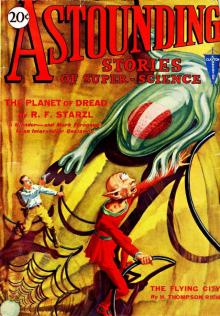 Astounding Stories of Super-Science, August 1930
Astounding Stories of Super-Science, August 1930 Astounding Stories, August, 1931
Astounding Stories, August, 1931 The Burden of Loyalty
The Burden of Loyalty Return to Wonderland
Return to Wonderland Anthology - A Thousand Doors
Anthology - A Thousand Doors The Fantasy Fan, October 1933
The Fantasy Fan, October 1933 Astounding Stories, June, 1931
Astounding Stories, June, 1931 Southern Stories
Southern Stories Astounding Stories of Super-Science, May, 1930
Astounding Stories of Super-Science, May, 1930 The Fantasy Fan December 1933
The Fantasy Fan December 1933 Adventures in Many Lands
Adventures in Many Lands The Fantasy Fan February 1934
The Fantasy Fan February 1934 The Fantasy Fan November 1933
The Fantasy Fan November 1933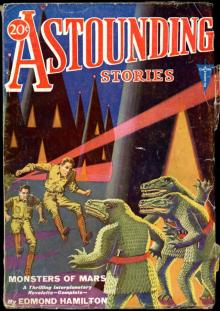 Astounding Stories, April, 1931
Astounding Stories, April, 1931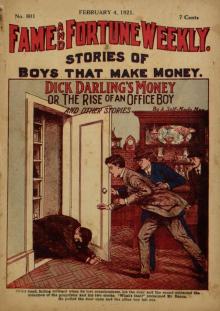 Fame and Fortune Weekly, No. 801, February 4, 1921
Fame and Fortune Weekly, No. 801, February 4, 1921 Astounding Stories of Super-Science, November, 1930
Astounding Stories of Super-Science, November, 1930 Astounding Stories of Super-Science January 1931
Astounding Stories of Super-Science January 1931 A Monk of Fife
A Monk of Fife Astounding Stories of Super-Science September 1930
Astounding Stories of Super-Science September 1930 Astounding Stories of Super-Science July 1930
Astounding Stories of Super-Science July 1930 Astounding Stories of Super-Science, June, 1930
Astounding Stories of Super-Science, June, 1930 Astounding Stories of Super-Science, October, 1930
Astounding Stories of Super-Science, October, 1930 Astounding Stories of Super-Science, March 1930
Astounding Stories of Super-Science, March 1930 The Fantasy Fan January 1934
The Fantasy Fan January 1934 The Fantasy Fan September 1933
The Fantasy Fan September 1933 Astounding Stories of Super-Science February 1930
Astounding Stories of Super-Science February 1930 Astounding Stories, May, 1931
Astounding Stories, May, 1931 Strange Stories of Colonial Days
Strange Stories of Colonial Days Golden Age of Science Fiction Vol IX
Golden Age of Science Fiction Vol IX Astounding Stories of Super-Science, December 1930
Astounding Stories of Super-Science, December 1930 Evolutions: Essential Tales of the Halo Universe
Evolutions: Essential Tales of the Halo Universe Good Stories Reprinted from the Ladies' Home Journal of Philadelphia
Good Stories Reprinted from the Ladies' Home Journal of Philadelphia Dragons!
Dragons!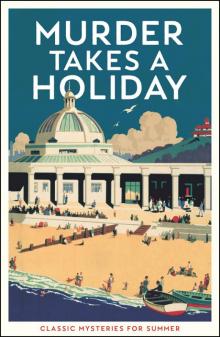 Murder Takes a Holiday
Murder Takes a Holiday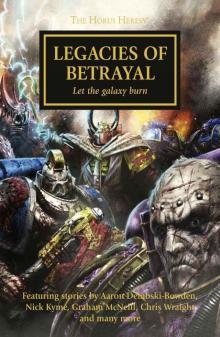 Legacies of Betrayal
Legacies of Betrayal STAR WARS: TALES FROM THE CLONE WARS
STAR WARS: TALES FROM THE CLONE WARS Strange New Worlds 2016
Strange New Worlds 2016 Lippincott's Magazine, August, 1885
Lippincott's Magazine, August, 1885 Golden Age of Science Fiction Vol X
Golden Age of Science Fiction Vol X Hot Stuff
Hot Stuff Santa Wore Spurs
Santa Wore Spurs Paranormal Erotica
Paranormal Erotica Tangled Hearts: A Menage Collection
Tangled Hearts: A Menage Collection Sweet Tea and Jesus Shoes
Sweet Tea and Jesus Shoes The Journey Prize Stories 25
The Journey Prize Stories 25 Wild Western Tales 2: 101 Classic Western Stories Vol. 2 (Civitas Library Classics)
Wild Western Tales 2: 101 Classic Western Stories Vol. 2 (Civitas Library Classics) (5/15) The Golden Age of Science Fiction Volume V: An Anthology of 50 Short Stories
(5/15) The Golden Age of Science Fiction Volume V: An Anthology of 50 Short Stories (4/15) The Golden Age of Science Fiction Volume IV: An Anthology of 50 Short Stories
(4/15) The Golden Age of Science Fiction Volume IV: An Anthology of 50 Short Stories Ten Journeys
Ten Journeys The Boss
The Boss The Penguin Book of French Poetry
The Penguin Book of French Poetry Golden Age of Science Fiction Vol VIII
Golden Age of Science Fiction Vol VIII His Cinderella Housekeeper 3-in-1
His Cinderella Housekeeper 3-in-1 The Magazine of Fantasy & Science Fiction - July/August 2016
The Magazine of Fantasy & Science Fiction - July/August 2016 PYRATE CTHULHU - Tales of the Cthulhu Mythos (vol.2)
PYRATE CTHULHU - Tales of the Cthulhu Mythos (vol.2) Tales from a Master's Notebook
Tales from a Master's Notebook April 1930
April 1930 New Erotica 6
New Erotica 6 Damocles
Damocles The Longest Night Vol. 1
The Longest Night Vol. 1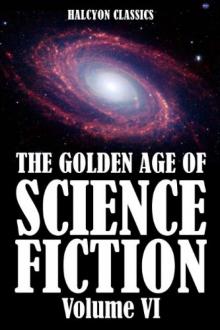 The Golden Age of Science Fiction Volume VI: An Anthology of 50 Short Stories
The Golden Age of Science Fiction Volume VI: An Anthology of 50 Short Stories (1/15) The Golden Age of Science Fiction: An Anthology of 50 Short Stories
(1/15) The Golden Age of Science Fiction: An Anthology of 50 Short Stories Eye of Terra
Eye of Terra ONCE UPON A REGENCY CHRISTMAS
ONCE UPON A REGENCY CHRISTMAS Nexus Confessions
Nexus Confessions Passionate Kisses
Passionate Kisses War Without End
War Without End Doctor Who: Time Lord Fairy Tales
Doctor Who: Time Lord Fairy Tales Gotrek and Felix: The Anthology
Gotrek and Felix: The Anthology WESTERN CHRISTMAS PROPOSALS
WESTERN CHRISTMAS PROPOSALS The Journey Prize Stories 27
The Journey Prize Stories 27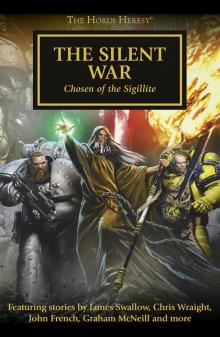 The Silent War
The Silent War Liaisons
Liaisons Ellora's Cavemen: Tales from the Temple IV
Ellora's Cavemen: Tales from the Temple IV Ellora's Cavemen: Tales from the Temple II
Ellora's Cavemen: Tales from the Temple II Some of the Best From Tor.com, 2013 Edition: A Tor.Com Original
Some of the Best From Tor.com, 2013 Edition: A Tor.Com Original Urban Occult
Urban Occult Fractures
Fractures The Stories: Five Years of Original Fiction on Tor.com
The Stories: Five Years of Original Fiction on Tor.com The Penguin Book of Modern British Short Stories
The Penguin Book of Modern British Short Stories Mortarch of Night
Mortarch of Night The Portable Nineteenth-Century African American Women Writers
The Portable Nineteenth-Century African American Women Writers The Golden Age of Science Fiction Volume VII: An Anthology of 50 Short Stories
The Golden Age of Science Fiction Volume VII: An Anthology of 50 Short Stories Holy Bible: King James Version, The
Holy Bible: King James Version, The Eight Rooms
Eight Rooms sanguineangels
sanguineangels DarkNightsWithaBillionaireBundle
DarkNightsWithaBillionaireBundle Casserole Diplomacy and Other Stories
Casserole Diplomacy and Other Stories How I Survived My Summer Vacation
How I Survived My Summer Vacation Alfred Hitchcock Presents: 16 Skeletons From My Closet
Alfred Hitchcock Presents: 16 Skeletons From My Closet Lords, Ladies, Butlers and Maids
Lords, Ladies, Butlers and Maids The B4 Leg
The B4 Leg Ellora's Cavemen: Tales from the Temple I
Ellora's Cavemen: Tales from the Temple I 2014 Campbellian Anthology
2014 Campbellian Anthology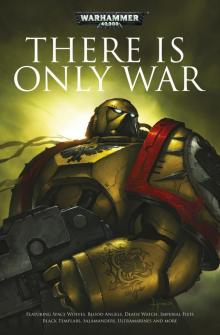 There Is Only War
There Is Only War Obsidian Alliances
Obsidian Alliances 12 Gifts for Christmas
12 Gifts for Christmas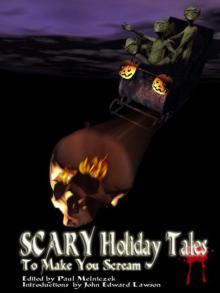 Scary Holiday Tales to Make You Scream
Scary Holiday Tales to Make You Scream 25 For 25
25 For 25 The Plagues of Orath
The Plagues of Orath And Then He Kissed Me
And Then He Kissed Me Star Trek - Gateways 7 - WHAT LAY BEYOND
Star Trek - Gateways 7 - WHAT LAY BEYOND Laugh Your Head Off Again and Again
Laugh Your Head Off Again and Again The Balfour Legacy
The Balfour Legacy Golden Age of Science Fiction Vol XI
Golden Age of Science Fiction Vol XI (3/15) The Golden Age of Science Fiction Volume III: An Anthology of 50 Short Stories
(3/15) The Golden Age of Science Fiction Volume III: An Anthology of 50 Short Stories Shas'o
Shas'o Astounding Science Fiction Stories: An Anthology of 350 Scifi Stories Volume 2 (Halcyon Classics)
Astounding Science Fiction Stories: An Anthology of 350 Scifi Stories Volume 2 (Halcyon Classics) Twists in Time
Twists in Time Meduson
Meduson The Magazine of Fantasy & Science Fiction - August 1980
The Magazine of Fantasy & Science Fiction - August 1980 The Journey Prize Stories 22
The Journey Prize Stories 22 The Book that Made Me
The Book that Made Me Angels of Death Anthology
Angels of Death Anthology Ask the Bones
Ask the Bones Emergence
Emergence Beware the Little White Rabbit
Beware the Little White Rabbit Xcite Delights Book 1
Xcite Delights Book 1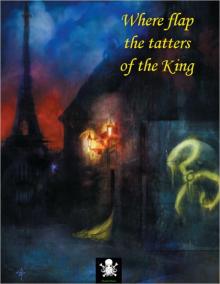 Where flap the tatters of the King
Where flap the tatters of the King The Journey Prize Stories 21
The Journey Prize Stories 21 Tales of the Slayer, Volume II
Tales of the Slayer, Volume II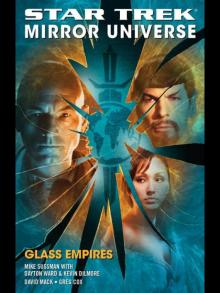 Glass Empires
Glass Empires Golden Age of Science Fiction Vol XII
Golden Age of Science Fiction Vol XII (2/15) The Golden Age of Science Fiction Volume II: An Anthology of 50 Short Stories
(2/15) The Golden Age of Science Fiction Volume II: An Anthology of 50 Short Stories Fairytale Collection
Fairytale Collection Angels!
Angels! Golden Age of Science Fiction Vol XIII
Golden Age of Science Fiction Vol XIII